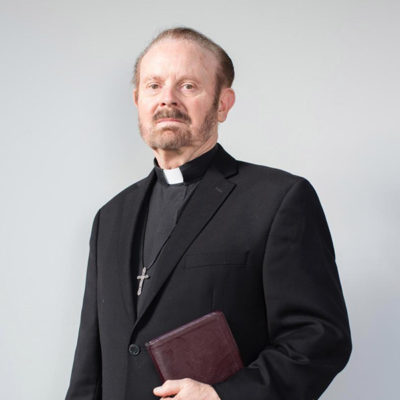The following is taken from Dr. Bob Larson’s QUICK GUIDE TO CULTS, the section on Buddhism. The entire teaching is available exclusively on our streaming platform XDUNAMIS. What follows is a portion of the teaching on how to get free from Buddhism.
With more than 500 million adherents, Buddhism is the world’s fourth largest religion (behind Christianity, Islam, and Hinduism). Its numbers in North America are estimated to be 30 million, and that doesn’t include “cultural” Buddhists who don’t formally identify but who practice the meditation techniques of Buddhism. The traditional Asian image of Buddhist monks with saffron robes and carrying begging bowls may be foreign to the Western mind. But the concept of joining a cosmic flow to abolish the ego goes down well in an age that has turned inward. While many Christians have focused on the dangers of witchcraft and Satanism, Buddhism had steadily gained far more adherents with its deception of offering inner peace through the negation of one’s ego. Those who look to the East for spiritual answers often find Christianity’s promise of heaven less attractive than Buddhism’s mystical, impenetrable “truths.” To many spiritual seekers, problem solving by constructive action appears less desirable than the subjective quest for nirvana.
Ironically, Tibetan Buddhism, one of the most complex forms of Buddhism has become increasingly popular in the West, thanks to the influence of one man: the Dalai Lama. After the Pope, he is the best-known and most widely recognized religious figure on the planet. He has become the de facto leader of mystical spiritual seekers.
But the faith he represents is an ancient and esoteric brand of Buddhism. Padina Sambhava, a famed pagan exorcist, introduced Buddhism to Tibet in A.D. 747. His reputation so impressed the king that the entire land soon was following his blend of Hindu and Buddhist beliefs mingled with spells and secretive tantric ceremonies. Devotees preceded acts of sexual union with the ritualistic consumption of wine, meat, fish, and parched grains. They instituted a priesthood of lamas (superior ones) and designed prayer wheels with inscribed litanies. Mantras and mandalas (mystic diagrams) were also adopted. Tibetan Buddhist mantras were believed to possess a sound able to induce transcendent experiences. The same with the popular New Age so-called Tibetan “singing bowls.”
Mandalas, circular, geometrically designed cosmograms of the universe, were also used as an aid in worship. They are now common interior design items in the West, along with the ubiquitous Buddha heads or seated Buddha statues that adorn many upper scaled homes. The center of the mandala was thought to be a focal point of the universe. Adherents of Tibetan Buddhism were taught that merely glimpsing a mandala could start them on the road to nirvana.
Tibetan Buddhists also developed the legend of Shambhala, an imaginary kingdom of enlightened citizens, the Asian version of the fabled Atlantis. This central Asian civilization was said to be the spiritual inspiration of the entire world. Their “warriors” were believed to be people of compassion and awareness who still serve as models of Tibetan Buddhist aspirations.
Zen is the Buddhist variant best known for paradoxes and imponderables such as, “What is the sound of one hand clapping?” Most people would easily recognize this riddle without knowing either its purpose or source. This conundrum, and seventeen hundred others like it, is known as a koan, a paradoxical question concerning imponderable thoughts. The perplexity posed by the koan is designed to lead the mind toward intuitive truth. In the world of Zen, logic and reason are taboo. As one Zen practitioner put it, “Be nothing, think nothing.” Zen may be defined as concentration with an empty mind.
While the precepts of Buddhism may not be based on specific theological doctrines, the inherent Buddhist worldview that results from such non-Christian meditation causes the meditator to see himself as an integrated part of the whole. Buddhism presupposes that only one essence exists and that we are all somehow part of this one essence (monism). This teaching is contrary to the Christian assertion that the God, the Eternal One, created the world and man out of nothing. Thus, no part of this material existence is part of God. There is an eternal distinction between the Creator and the created.
The inherent contradictory nature of the anecdotal koan in Buddhism conditions the devotee to reject reason and logic and instead rely on mystical experience to test truth. Buddhism is an egocentric search for subjective authority while inherently denying any objective authority for morality.
Since Zen has no God, the priests have no role of intercession for sin. There is no speculation on the nature of creation or the future of an afterlife since everything considered important is embodied in the experience of the moment. Meditation is the quintessential essence of Buddhism, liberating the meditator from all life’s miseries. Christians may see this process as a false perception of spiritual insight.
Those who have embraced the practices and beliefs of Buddhism, and what is popularly known as “mindful meditation,” have given themselves over to a diabolical belief system that is filled with openings for demonic forces. As an exorcist, I have discovered that some of the most powerful and most difficult demons to dislodge are those found in the many variants of Buddhism. Its meditative processes invite strong evil spirits of mind control to enter, and these demons take time and persistence to dislodge.
For the individual leaving Buddhism and seeking a personal relationship with Christ these ten steps are necessary:
- Renounce Buddhism in general and any particular variant, such as Zen.
- Break soul-tie connections with Buddha, an historical figure and also the name of the demon behind this system.
- Renounce soul-ties with all Buddhist spiritual mentors, including instructors in what is known as dharma, the teaching and false eternal cosmic “truths” of Buddhism.
- Renounce the variant of Buddhism you aligned with, Zen, Zazen, Mindful Meditation, Theravada, Mahayana, or the currently popular Pure Land Buddhism.
- Discard all Buddhist texts, books, or paraphernalia, such as mandalas, singing bowls, bells etc.
- Stop all focused breath meditation. Ask the Holy Spirit to remove all koans from your mind.
- Renounce empathic meditation, taking unto yourself the pain and suffering of others. Christ alone is the one to whom we hand our pain. Claim the promise of Matthew 11:28 that Christ is the one who gives us rest.
- Renounce every effort to connect with past lives.
- Renounce any so-called “deity meditation,” a fast-track way (especially in Tibetan Buddhism meditation schools) to obtain compassion by invoking what the Bible calls demons.
- Renounce Samsara, the false Buddhist definition of attachment to pleasures of the world, and instead focus on 1 John 2:15, “Love not the things which are in the world.” Samsara is a diabolical substitute for the true Christian ethic of abstaining from the pursuit of ungodly indulgences.
Do these ten things and you will be on your way to freedom from Buddhism.







